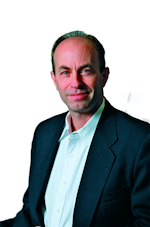COMSOL software approaches photonics from many angles
Danvers, MA--While the COMSOL (Burlington, MA) Multiphysics modeling and simulation software can be directly applied to the simulation of photonics-related phenomena (owing to its ability to simulate electromagnetic fields and many types of optical materials) it has indirect applications, too.
For example, Osram Sylvania is using COMSOL to models the effects of acoustic phenomena on the plasma in high-intensity-discharge (HID) lamps; the proper application of acoustic waves to the plasma can result in an increase in lamp efficiency of up to 50%.1
Osram Sylvania engineers are using both simulation and experiment to improve their HID lamps, with each approach revealing critical information that the other does not provide. In the simulation, acoustics, mass flow, and electric current are modeled at timescales ranging from 10 microseconds (for modeling instantaneous acoustic propagation) to 10 milliseconds (for modeling time-averaged flow).
A simulation of a bowed arc with no acoustics appears off-center (figure left; color is gas temperature, arrows are velocity vectors). With acoustic excitation applied, the arc appears well-centered (figure right).
Because photonic devices so often make use of more than just light, it can be quite handy to model other phenomena such as heat, electricity, sound, chemical reactions, or mass flow (or any combination) as well—as this example shows.
REFERENCE:
1. J. Olsen and T. D. Dreeben, "Experimental and Simulated Straightening of Metal Halide Arcs Using Power Modulation", IEEE Transactions, submitted.

John Wallace | Senior Technical Editor (1998-2022)
John Wallace was with Laser Focus World for nearly 25 years, retiring in late June 2022. He obtained a bachelor's degree in mechanical engineering and physics at Rutgers University and a master's in optical engineering at the University of Rochester. Before becoming an editor, John worked as an engineer at RCA, Exxon, Eastman Kodak, and GCA Corporation.
